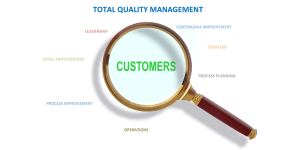In today’s ever-changing business world, companies are always seeking ways to increase efficiency and reduce costs. One methodology that has gained popularity in recent years is Lean Six Sigma. It is a combination of two powerful methodologies, Lean and Six Sigma, which are used to optimize business processes and improve overall performance. In this beginner’s guide, we will discuss the five key principles of Lean Six Sigma that can help any business achieve success.
1. Define
The first principle of Lean Six Sigma is to define the problem. This involves identifying the problem, its scope, and its impact on the business. A project charter is created to define the problem, its goals, and its expected outcomes. It is important to involve all stakeholders in this process to ensure everyone is on the same page.
2. Measure
The second principle is to measure the current process. This involves gathering data on the process to establish a baseline. The data is then analyzed to identify any areas of waste or inefficiency. This step is crucial to identify the root cause of the problem and to determine the impact of any changes made to the process.
3. Analyze
The third principle is to analyze the data collected in the previous step. This involves identifying the cause and effect relationships and determining the root cause of the problem. Different tools and techniques are used in this step, such as fishbone diagrams, process maps, and statistical analysis.
4. Improve
The fourth principle is to improve the process. This involves implementing changes based on the analysis conducted in the previous step. Various improvement techniques such as brainstorming, mistake-proofing, and value stream mapping are used to optimize the process and reduce waste.
5. Control
The final principle is to control the process. This involves monitoring the process to ensure it remains stable and within acceptable limits. Statistical process control (SPC) tools are used to monitor the process and to detect any changes that may indicate the process is moving out of control. This step is critical to sustain the improvements made in the previous steps.
Conclusion
Lean Six Sigma is a powerful methodology that can help businesses achieve significant improvements in their processes and overall performance. The five principles defined in this beginner’s guide are the key to success. By defining the problem, measuring the process, analyzing the data, improving the process, and controlling it, businesses can achieve success and remain competitive in today’s fast-paced business world.












